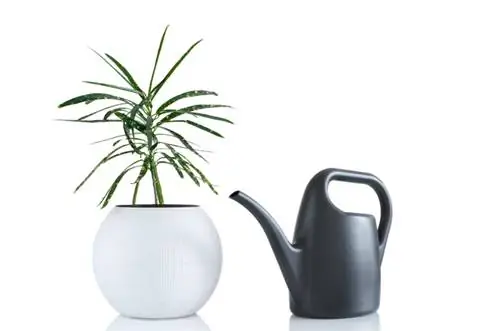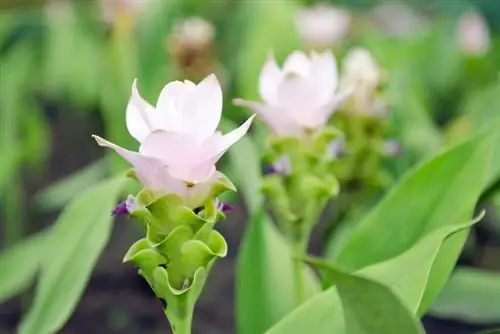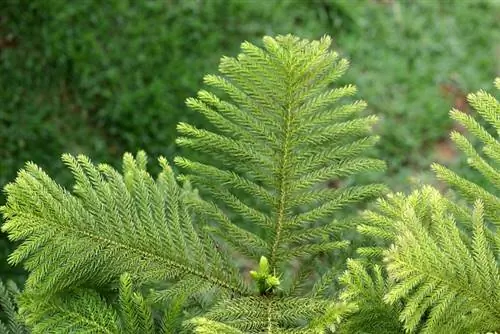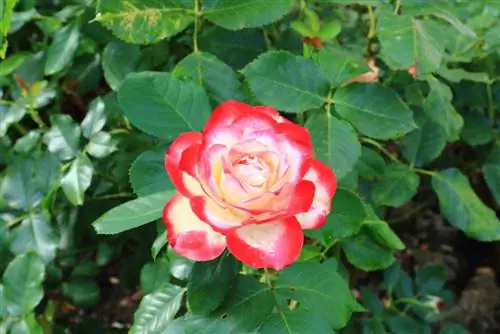- Author admin [email protected].
- Public 2023-12-16 16:46.
- Last modified 2025-01-23 11:20.
There is no one indoor palm; rather, there are different types of palm trees and palm-like plants, all of which have different needs. Therefore, there are no general care instructions and the perfect location for all indoor palms.
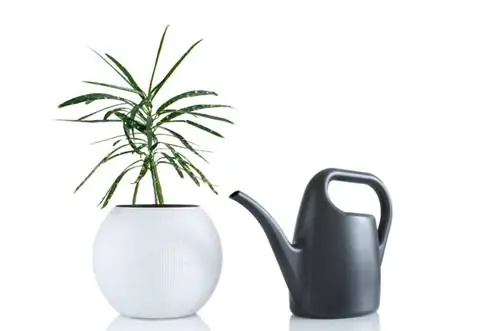
How do I properly care for an indoor palm?
Caring for an indoor palm includes regular watering without waterlogging, a bright to slightly shady location, high humidity and no pruning apart from brown leaves. When growing, the palm tree needs long-term fertilizer and should be repotted every 3-4 years.
Planting and repotting indoor palms
It is best to repot a freshly purchased indoor palm immediately, because the pots in stores are usually too small and there is not enough space for the roots. Later it will be sufficient to repot this houseplant about every three to four years.
Always choose the size of the new pot so that the roots have enough space to grow. The smaller the pot, the slower or less your indoor palm will grow. Press the new soil well and water your palm tree thoroughly.
Watering and fertilizing indoor palms
Most indoor palms are quite thirsty and need regular water. Many of them are tropical or subtropical plants and prefer high humidity. If the air is too dry, such as the heating air in winter, then your indoor palm becomes susceptible to diseases or pests.
Water your indoor palm at the latest when the top layer of soil has dried slightly. Be sure to avoid waterlogging, as this could cause the roots of your indoor palm to rot. Over time you will get a feel for the right amount of water. It only needs fertilizer during the growth phase. For most species, a normal long-term fertilizer (€3.00 on Amazon) is sufficient.
Cutting indoor palms
You should not cut any of the indoor palms. If you damage the vegetation point in the middle of the crown, your palm will stop growing and may even die.
Only remove dried brown leaves, but only when they are completely dry. Yucca palms are an exception; their trunks can be pruned and divided for propagation.
Indoor palm trees in winter
Some types of indoor palms are more or less frost hardy, others can hardly tolerate temperatures below 10 °C to 12 °C. Robust indoor palms can spend the summer on the balcony or in the garden, but in autumn they should slowly move back into the house. Always adapt palm trees slowly, they do not tolerate abrupt changes in location or temperature.
The most important things in brief:
- mostly relatively easy to care for
- many varieties are very thirsty
- high humidity
- cutting not necessary, possibly even harmful
- Location: mostly bright to slightly shady, mostly rather warm
- not all varieties are hardy
- usually slow growing
Tip
Before buying your indoor palm, find out exactly what care this houseplant needs. There are palm trees that are well suited for beginners and those that are a little more complicated in their requirements.

